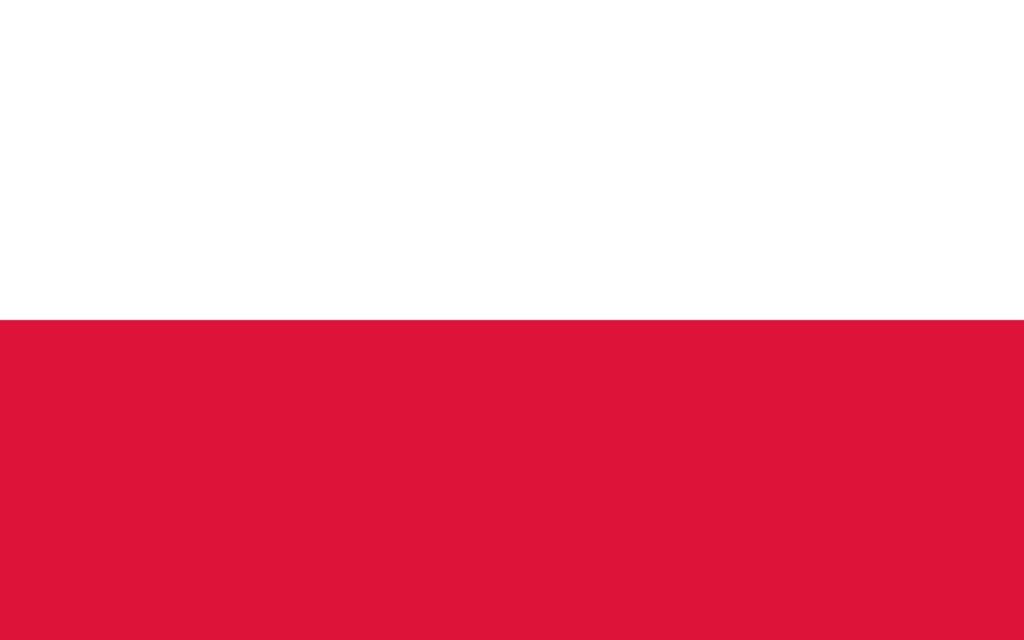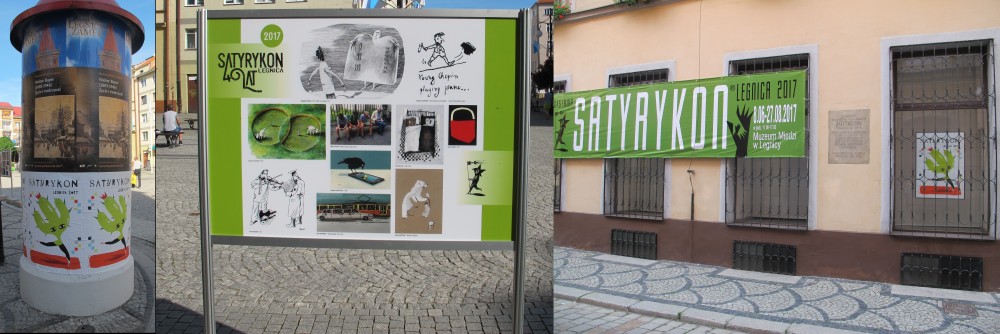I am on the train coming back from Satyrykon. It has been the first Satyrykon in my life. I have never participated in it neither as an artist, nor as a jury member.
I try to remember the past. Satirical drawing has been present in various moments of my life, and thanks to it I have managed to shape this part of me I appreciate so much at others’. I have adored illustrated magazines since my early childhood. The first title was “Świat Młodych” [The World of Youth]. Neither “Świerszczyk” [Little Cricket], nor “Miś” [Teddy Bear] dedicated to kids, just “Świat Młodych”. And it was not because I was a genius child exceeding his age, it was because of the Tytus, Romek and A’Tomek comic on the last page. It must have been the very first clear moment in my memory of myself bursting with laughter. I can also remember my disappointment and sadness when I was leaving the newsagent’s yet another time in a week empty-handed, and I could not believe that the word “weekly” meant that a new, smelling with wet paint issue I would be able to buy in the following week. I used to love the adventures of an ape undergoing the process of humanisation with various effects, a madcap bone, and a snooty geek wearing glasses. We used to communicate with “their texts” throughout elementary and secondary school. Knowledge of dialogues from Tytus comics served as a code, and helped us recognise each other like members of a secret society.
“Przekrój” [Cut It Apart] was the next periodical in my life. To be quite sincere nothing can be compared with the feeling of pride and excitement when I used to rush home with a new copy of “Przekrój”, with pages not slit apart. By the way, at home we would quarrel slightly about cutting these pages apart. It looked like I was the one to do it, but I can still remember a hint of irritation in my parents’ voices as well as diplomatic attempts at overtaking the ritual. Most certainly, not many of us remember today that the name of the weekly magazine was related with these not cut apart pages. I would always read and look through “Przekrój” in a Japanese manner, namely from the end, starting with the last page, and this custom I have cherished till today. On the last page of “Przekrój” one could have found a subtle, occasionally melancholic humour of Professor Filutek, and cartoons reprinted from “Punch”, “The New Yorker” and other world magazines. This last page became to me the first, the most significant, my favourite one. Well, I also loved the covers. Especially when they were drawn by Daniel Mróz. I can remember that these cartoons from the last-first page were extremely funny, I loved showing them to my parents, I adored when they started laughing. This laughter was an important part of our family. I used to look through “Przekrój” more than read it, or it is more adequate to say that I looked through the magazine first, only then I read it.
The juvenile time meant yet another, this time satirical periodical, “Szpilki” [Pins]. Right after the classes in the Secondary School of Arts, we would run to the Krakow city centre and visit the cecond-hand bookshops. The best place to go was a bookshop which no longer functions on the corner of Sławkowska and Św. Tomasza streets. “Szpilki” fascinated us with its graphic art, the variety of styles, but in the first place with its sense of humour. We loved cartoons by Chodorowski, Czeczot, Jura, Sawka, Dudziński and Januszewski, but we would laugh most at Mleczko’s cartoons and comic stripes. We even had a sort of competition. The one who managed to buy “Szpilki” with Mleczko was the winner, and especially when the just bought issue was not known before.
The cartoons and illustrations were very important for me and my friends. We would judge them and create a ranking while viewing. We used to have our favourite cartoons, and I can remember them best till today. The others did not make them laugh so much. And we were able to explain why. Though, to be completely honest, we didn’t bother about those not funny cartoons. Their lives were short unless they were drawn sensationally. I did not suppose then that one day in the future the judging skills combined with the sense of humour would be useful.
I’m on the train, I hark back Saturday, I’m recalling dozens of the viewed works.
This year Satyrykon comprises 2.388 works by 670 authors from 59 countries. Its open formula is a wonderful gesture on the one hand, as the contest invites all adepts in art, young artists, students of art schools, and lively seniors; non-professional from centre for culture and professionally active artists. While on the other hand, it is a curse, as it is so difficult to compare all these entries. The variety of media and styles is also a curse, but this excess, eclecticism, or even surfeit to some extent mark our times. The Organisers and the Jury have not had an easy task. However, it has been an extraordinary experience. As the Jury had to select the best works from this real Tower of Babel regardless their styles or traditions. The times we happened to live in are reflected in Satyrykon like in a mirror. There are various motives and topics, some are local, and some are foreign, the others are more universal. Have the works been marked by a high level? I cannot compare with the previous years. I would define the level as quite decent. I can still remember a lot of great illustrations, numerous excellent ideas, some funny cartoons, a few really funny, and it is many indeed. The jury’s proceedings were acrimonious, though fair. The jury reached a democratic verdict, although nonunanimous, the majority has decided. This is how a jury works, the contest formula works and so it should be this way.
I’m on the train, I’m coming back from Satyrykon, I think I’ll slowly doze off.
Falling asleep I am quietly giggling, remembering Young Chopin playing piano.
Dariusz Vasina
INTERNATIONAL EXHIBITION SATYRYKON – Legnica 2017
opening of the post-competition exhibition
Copper Museum in Legnica, Św. Jana Street 1, 16th June 2017 (Friday) at 6.00 p.m.


